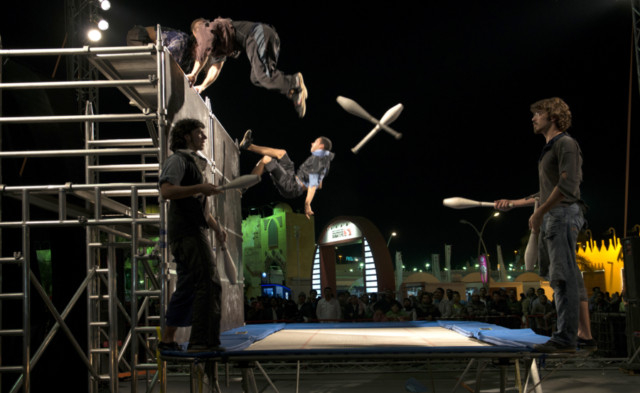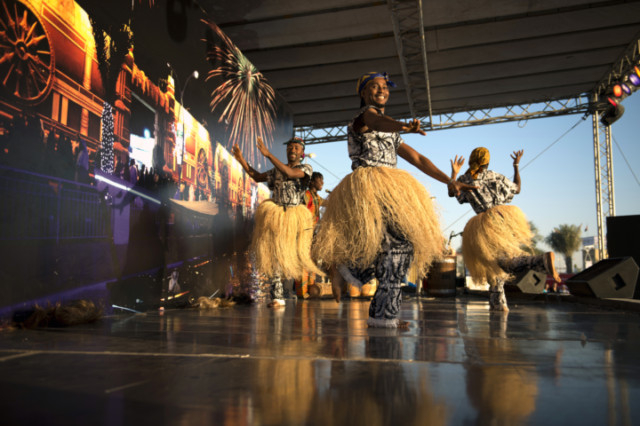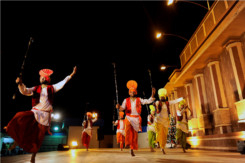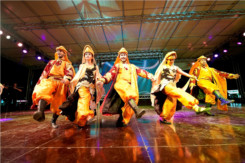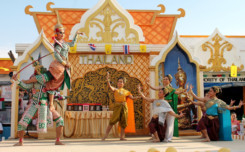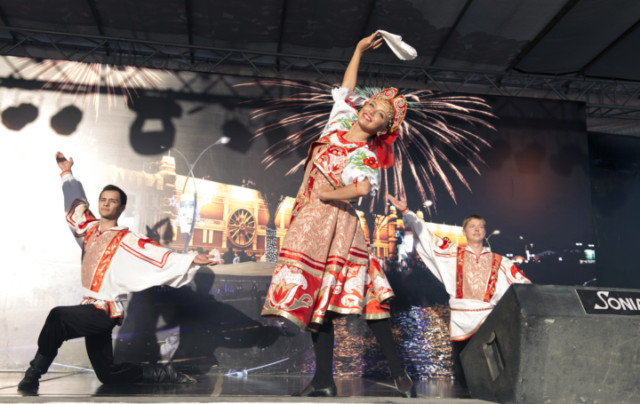
DUBAI The Dubai Shopping Festival (DSF) is that time of year when the world comes to shop in Dubai. But the city offers more than just shopping bargains and killer deals during the month-long festival.
Visitors are treated to a cultural kaleidoscope as the city plays host to myriad traditional and cultural art forms from around the globe.
Wild beats of tribal Africa, soul-stirring music of the Sufis, pulsating rhythms of the Pakistani dhols and Indian bhangra, addictive tempo of the Lebanese ‘dabka’ and Egyptian ‘masri’, foot-tapping flamenco from Spain, Mexican music at its mesmeric best, ethnic and exotic Ghana, swaying steps by Thai and Western danseuses… Dubai transforms itself into a theatre of the world as international artists entertain an audience as different and diverse as their art forms.
Western beats
The Western dance troops from Brazil, Spain, Mexico, Greece and Russia are great crowd pullers as they stand out in their bright, modern costumes and lively dancing.
Cirq’lation Locale from Belgium is an apt example of the cultural milieu, which Dubai proudly stands for. A crossover circus show with a mix of acrobatics and juggling, dance and humour, the team hails from different parts of Europe. Abdel and Jimmy are from France, Remy is from Switzerland, Edu and Cristo are from Spain. Their act at the Global Village is simply mesmerising as the five players try to outdo each other on the trampoline as the beats of modern music guide their precision moves, which seem extremely dangerous at times, and funny and light-hearted at others.
Showcasing a mix of ballet finesse and flair of the Russian folk with Belarusian spirit was the government-owned folk group from Belarus that performs daily shows at the Village. Dressed in fashionable and colourful costumes that reflect the grandeur of erstwhile Europe, the dancers moved in pairs and in harmony to the music. “Our artists are all professionals and they have at least eight years of ballet school experience,” said Fedor, their team leader.
Competing for attention is the equally vibrant Arabian ‘Dabkah’ (folk dance) from countries like Jordan, Lebanon, Egypt and Palestine with local variations influencing the beats and the movements. Lora Wehbe, choreographer for the Lebanese group Al Andalus, said each of these local variations reflects the musical traditions in different regions of the Arab world. “The dance forms and the musical beats tell the story of our people, their struggles and aspirations,” said Wehbe.
The Palestinian dance and music evokes an intense patriotic fervour in the Palestinian community and the larger Arab audience. The singing and dancing is accompanied by chanting from the audience in support of the Palestinian struggle for peace in their homeland. “It is always an issue close to our heart. Dance and music are a great way to stir your strongest of emotions and that is what you see here,” said Mohammad Abdel, a Jordanian businessman who was at the Palestinian pavilion.
African rhythm
Dubai’s cultural multiplicity and ethnic diversity were on full display as a few metres away the African tribal culture came alive with the West African dance group from Ghana. The ‘Bamaya’ or the rain dance revolves around the theme of the draught which took place in West Africa at the beginning of the 19th century. The chief of the tribe asks the women to go to the valley in search of the rain, and on their success an exhilarating performance follows on the drumbeats of the “dondo” and “luag” (traditional drums).
Hisham Ahmad, an Egyptian father and a visitor, said the best thing about being in Dubai during the Shopping Festival is that he can show the world to his three kids. “Not everybody gets to travel around the world. Our visit to Dubai has helped my children taste a variety of cuisines, enjoy dance and music from Europe, Africa and Asia,” said Ahmad who is an engineer in Cairo.
His family has already seen the lion dance from China, tanoura dance from Egypt, bhangra from India and the western varieties from Mexico, Spain and Brazil.
Let’s do the bhangra
The performers who entertain the visitors at the shopping malls or the eager audiences at the Creek Park or the Global Village are stalwarts in their own rights. In fact some of these globe-trotting artists are popular faces on the small screen back home.
Khadir Hussain of the Pakistani group ‘Shehnai’ performing at the Global Village is one such artist. As the crowd goes into a frenzy at the pulsating beats of Punjabi dhol (traditional drums), Hussain knows how to play it to the gallery. A pro at his art, the Pakistani performer starts gyrating with the strings of the dhol held between his teeth, all the while drumming up more cheer from the audience. “We combine traditional Pashtu, bahngra, dhamaal and kaharva beats popular in the Punjab province of Pakistan. It is a great feeling to see the audience respond to our music and it energises the artists,” said Hussain. His four member group is well-known in Pakistan, and performs daily at the Pakistani pavilion at the Global Village.
Similar in Shehanai’s spirit and splendour is ‘The International Bhangra’ group from India that performs weekly shows at Festival City, Mall of the Emirates and other shopping malls. The 12-member troop was born when a bunch of enthusiastic college students from Jalandhar in the Indian state of Punjab decided to take the bhangra beats to the world. The group has performed for two Bollywood films and has toured the UK, Malaysia, Turkey, Russia and France to name a few. “We are young and want to see the world,” quipped Karamveer, a member of the group who is also a business management student. For now Dubai is his stage.



